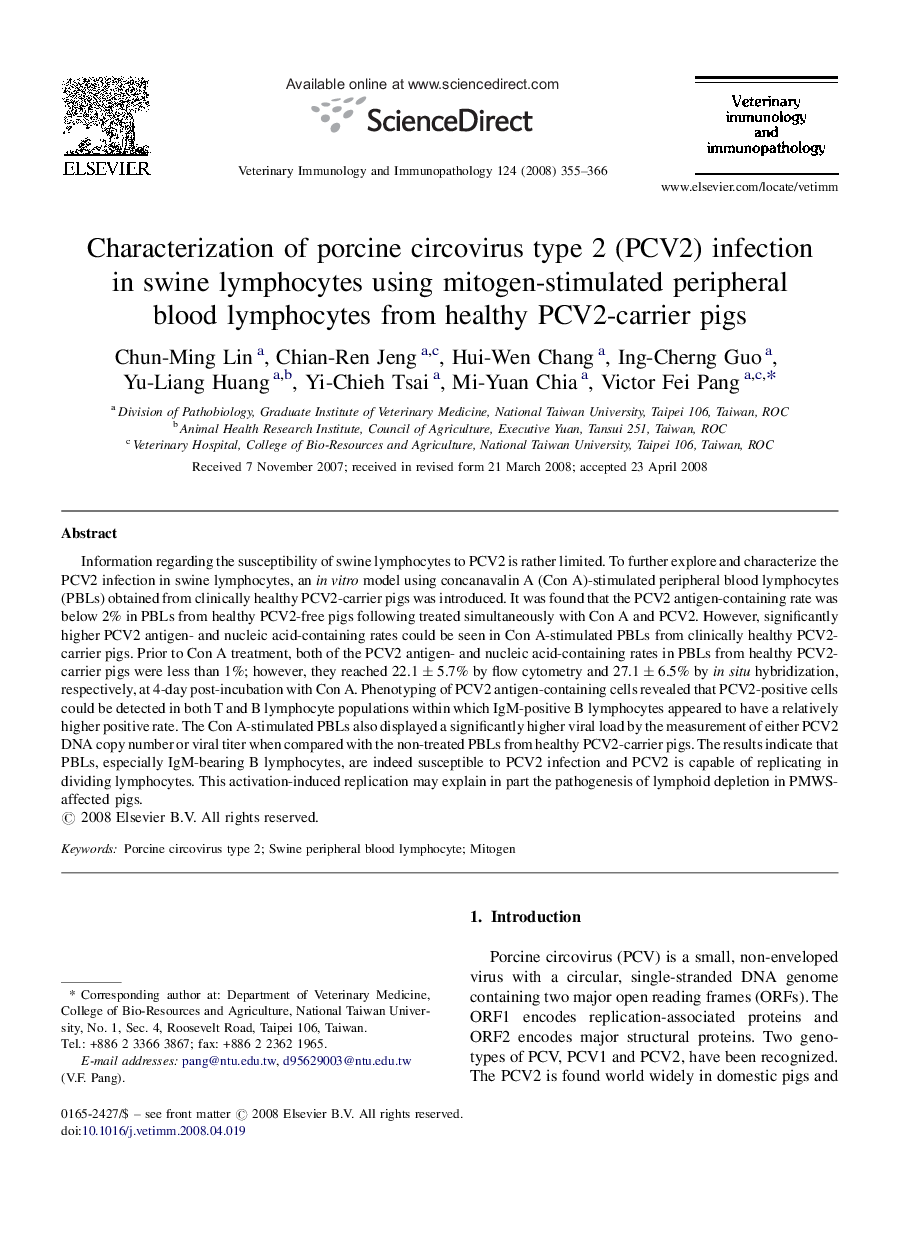| Article ID | Journal | Published Year | Pages | File Type |
|---|---|---|---|---|
| 2462920 | Veterinary Immunology and Immunopathology | 2008 | 12 Pages |
Information regarding the susceptibility of swine lymphocytes to PCV2 is rather limited. To further explore and characterize the PCV2 infection in swine lymphocytes, an in vitro model using concanavalin A (Con A)-stimulated peripheral blood lymphocytes (PBLs) obtained from clinically healthy PCV2-carrier pigs was introduced. It was found that the PCV2 antigen-containing rate was below 2% in PBLs from healthy PCV2-free pigs following treated simultaneously with Con A and PCV2. However, significantly higher PCV2 antigen- and nucleic acid-containing rates could be seen in Con A-stimulated PBLs from clinically healthy PCV2-carrier pigs. Prior to Con A treatment, both of the PCV2 antigen- and nucleic acid-containing rates in PBLs from healthy PCV2-carrier pigs were less than 1%; however, they reached 22.1 ± 5.7% by flow cytometry and 27.1 ± 6.5% by in situ hybridization, respectively, at 4-day post-incubation with Con A. Phenotyping of PCV2 antigen-containing cells revealed that PCV2-positive cells could be detected in both T and B lymphocyte populations within which IgM-positive B lymphocytes appeared to have a relatively higher positive rate. The Con A-stimulated PBLs also displayed a significantly higher viral load by the measurement of either PCV2 DNA copy number or viral titer when compared with the non-treated PBLs from healthy PCV2-carrier pigs. The results indicate that PBLs, especially IgM-bearing B lymphocytes, are indeed susceptible to PCV2 infection and PCV2 is capable of replicating in dividing lymphocytes. This activation-induced replication may explain in part the pathogenesis of lymphoid depletion in PMWS-affected pigs.
